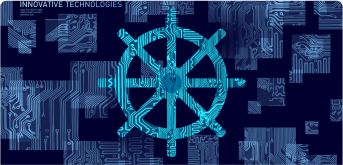Blogs / MySQL
How to Choose the Right Database for Your Application?
By
Harish K K
Posted: February 19, 2024
• 7 Minutes
Choosing the suitable database isn't just a matter of preference—it's an essential consideration that could impact the functionality and performance of your application. But with tons of options, choosing the wrong one can be costly and risky to fix later. So, how do you pick the perfect one? This can be challenging, especially with options like MySQL, PostgreSQL, and a plethora of cloud services like Amazon's Aurora, RDS, DynamoDB, and more.
This blog post will simplify the process by outlining key factors to consider. By understanding these factors, you can make an informed decision that aligns with your performance, scalability, and development efficiency goals.
Why it is Important to Choose the Right Database for Your Application
Choosing the right database offers you numerous benefits, such as reduced latency, optimized performance, improved storage space, and much more. Let’s examine each of these benefits in detail.
- The right database choice directly influences the speed and efficiency of data retrieval and processing, which in turn affects the overall performance of your application.
- The right database can seamlessly scale with your application as it grows. This ensures that the app can handle increasing data volumes and user loads without experiencing performance degradation.
- A suitable database maintains data integrity and ensures robust security measures are in place to protect sensitive information from unauthorized access or breaches.
- The database you choose can affect how easily you develop and maintain your application. It influences tasks like optimizing queries, modeling data, and integrating with other technologies.
- Making the correct database choice can save costs by preventing unnecessary expenses linked to over-provisioning or inefficient resource usage.
- A well-chosen database provides the flexibility to accommodate evolving business requirements and technological advancements, allowing your application to remain agile and competitive in the long run.
- The database influences how quickly and reliably your application can respond to user requests, directly impacting user satisfaction and retention rates.
- Making an informed database choice reduces the risk of encountering performance bottlenecks, data loss, or compatibility issues down the line, minimizing the need for costly and disruptive migrations or upgrades.
What are the Types of Databases
Databases can be broadly categorized into two types based on their data storage and retrieval methods: SQL and NoSQL.
SQL Databases
SQL databases, also known as relational databases, are structured databases that use predefined relationships between tables. They utilize Structured Query Language (SQL) for managing and querying data. SQL databases are widely used and are characterized by their adherence to the principles of ACID (Atomicity, Consistency, Isolation, Durability). The relational model organizes data into tables of rows and columns, where each row represents a record, and each column represents a specific attribute of that record.
Examples of SQL databases include MySQL, PostgreSQL, Oracle, and Microsoft SQL Server.
NoSQL Databases
NoSQL databases, or non-relational databases, offer an alternative to the structured approach of SQL databases. They are designed to handle unstructured or semi-structured data, such as documents, graphs, key-value pairs, and wide-column stores. NoSQL databases provide greater flexibility and scalability, making them suitable for handling large volumes of data, particularly in distributed environments. Unlike SQL databases, NoSQL databases do not require a fixed schema, allowing for dynamic and evolving data models. They are often used in scenarios where high availability, horizontal scalability, and rapid development are prioritized over strict consistency.
Some examples of NoSQL databases are MongoDB, Cassandra, Redis, and Couchbase.
Things to Consider While Choosing the Database for Your Application
Choosing the correct database is crucial, irrespective of whether it is a small-scale application or a large-scale enterprise system. This decision greatly affects performance, scalability, and cost-effectiveness. With a multitude of database options available, each tailored to different use cases and requirements, it is important to understand the key factors to make the right choice.
-
Evaluate the Schema or Data Model of Your Application
- Choose MySQL for stable data models and strict relational integrity needs, such as e-commerce or financial systems.
- MSSQL is suitable for agile environments, offering support for semi-structured and unstructured data types and for content management or social media analytics.
-
Consider Your Scaling Requirements
- Choose distributed databases like Cassandra, MongoDB, or HBase for horizontal scalability across clusters and handling high transaction rates.
- NoSQL databases over RDBMS for high throughput and scalability in handling large volumes of data and concurrent users.
- If your application anticipates handling large volumes of data, MSSQL Server's partitioning, data compression, and columnstore indexes can significantly improve scalability and performance.
- Opt for MSSQL Server's Always On Availability Groups and database mirroring in mission-critical applications to ensure uninterrupted availability and robust disaster recovery.
-
Evaluate Support and Documentation Availability
- If you are creating a web application reliant on user data management, MySQL and PostgreSQL, with their active user communities, provide strong options for open-source solutions.
- Alternatively, MongoDB and Cassandra, offering paid support options, can be suitable choices for organizations seeking additional support and features beyond community-driven development.
- For application ecosystems heavily reliant on Microsoft technologies, consider Microsoft SQL Server (MSSQL Server). Its seamless integration with Azure cloud services, Power BI, and Active Directory offers streamlined development, management, and deployment.
- Opt for MSSQL Server for applications with sensitive data or regulatory compliance needs. MSSQL's robust security features, like transparent data encryption and dynamic data masking, coupled with comprehensive enterprise support, ensure compliance with regulations like GDPR or HIPAA.
-
Consider Integration with Other Technologies
- Databases like MySQL or PostgreSQL, known for their native integrations with Django, would be optimal choices if you need to develop a web application that requires robust data storage capabilities integrated with the Django web framework. This will help you ensure smooth connectivity and an efficient development process.
- Opt for MSSQL Server if your project relies on Microsoft technologies like .NET, Azure, or Visual Studio for seamless connectivity and efficient development within the Microsoft ecosystem.
- Choose MSSQL Server for applications requiring advanced analytics and reporting. Its compatibility with tools like Microsoft Power BI ensures optimized performance for generating insightful reports and visualizations.
-
Evaluate the Financial Implications of the Database Solution
- If you want to create a web application that requires a budget-friendly database solution for user data management, consider MySQL or PostgreSQL, both open-source options, present viable choices.
- Alternatively, cloud-based databases like Amazon RDS or Google Cloud SQL, offering pay-as-you-go pricing, could be considered to manage costs effectively.
- Assess MSSQL Server's licensing models to manage costs effectively for enterprise applications. Choose the option that aligns with your budget and scalability needs, whether it's per-core or per-server licensing.
- Consider MSSQL Server's availability on cloud platforms like Azure SQL Database or Amazon RDS for cost-effective deployment. Opt for pay-as-you-go pricing models to scale resources based on demand and optimize costs for cloud-based deployments.
Evaluate the flexibility of the data model required for your application. While relational databases enforce a fixed and predefined schema, NoSQL databases offer greater flexibility, allowing for schema-less data storage and agile development practices. You must consider the ease of adapting to changing requirements and the agility required for rapid implementation when selecting the appropriate data model for your application.
Tips
When you evaluate scalability, consider aspects like horizontal scaling, sharding, and replication. Horizontal scaling adds more servers to the database cluster, which can be more cost-effective than vertical scaling. Sharding, supported by databases like MongoDB, spreads data across multiple servers. Replication, seen in databases like MySQL, improves reliability and scalability by storing data copies on multiple servers for read and write requests.
Additionally, consider factors such as anticipated data growth and transaction rate to determine scalability needs. If your app’s data volume is expected to grow significantly over time or you anticipate high throughput requirements, opt for database technologies capable of horizontal scaling across clusters. This ensures seamless expansion of server capacity as user data accumulates while maintaining optimal performance and user experience.
Tips
Evaluate the level of support needed for deploying and managing your chosen database technology. Assess whether your organization possesses the requisite expertise to configure and maintain the database effectively. In scenarios involving sensitive data or regulatory compliance, prioritize security considerations and ensure that adequate expertise is available for secure setup. So, look for a database with well-documented resources, including tutorials and API references, to expedite the setup process.
Tips
Make sure that your chosen database management system can seamlessly integrate with other tools, services, and technologies used in your project. Different technologies offer varying levels of support and compatibility, so consider the need for connectors and interoperability, which are integral to your project's functionality and performance.
Tips
When selecting a database for your project, it's essential to assess factors that contribute to the overall expense of a database solution. These factors may include license fees, hosting costs, maintenance costs, etc. Make sure that these factors are aligned with your budget constraints. Managed cloud solutions typically use a payment model tied to read/write traffic. However, it's crucial to gather finer details of each managed solution to ensure cost-effectiveness for your specific usage patterns.
Tips
Why Choose Gsoft Cloud's Managed MySQL Database Service
At Gsoft Cloud, we understand that managing databases can be time-consuming and distract developers from their development tasks. That's why we offer a fully managed MySQL database service, handling everything from maintenance to backups. We help you streamline your database management operations by offering efficient database integration aligned with your application’s requirements and expert guidance and support throughout the stages.
Have questions about our pricing plans or need a custom quote? Our team of cloud architects is here to help. Reach out to us today and see how we can support your business's success.


Get Know More About Our Services and Products
Reach to us if you have any queries on any of our products or Services.











